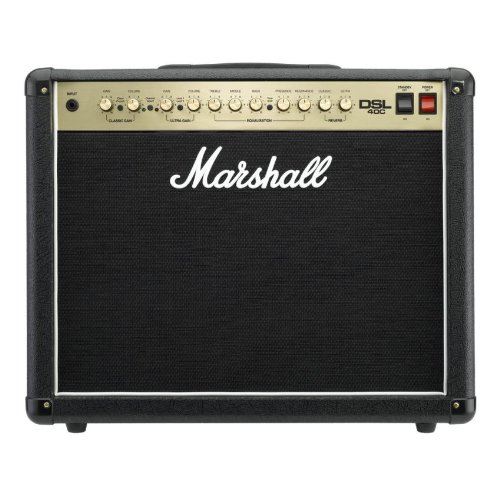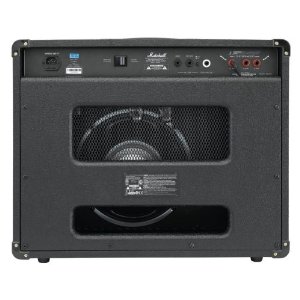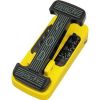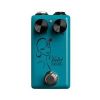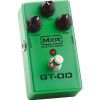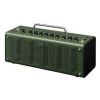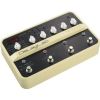Marshall Amplification have been responsible for creating amps used by some of the most famous guitar heroes and bands over the years and in the process has become one of the world’s most recognizable brands of musical equipment. 2012 was Marshall’s 50th anniversary, a huge milestone which not only saw the release of some anniversary models, but also saw an update to their line-up of DSL (Dual Super Lead) amps. Originally released in the late 90’s as part of the JCM2000 range these DSL’s went on to become modern classics. So how does the Marshall DSL40C combo amp from the new DSL line-up, measure up?
The new DSL range is based on the hugely popular DSL100, one of the most popular of the original range. The mid-sized, 40 watt (W) Marshall DSL40C sits between the compact 15W DSL15C combo plus the portable DSL15H head and the ultra-loud 100W DSL100H head. I have a vested interest in this, as I've had a 40W DSL401 from the original range for about 7 years so I was keen to see how it compared.
The Marshall DSL40C is an all-tube, combo amp with a robust cabinet, housing the various tubes and circuitry, a 12” speaker and with identical front and rear panel features (in a reversed layout) to the DSL100H. Added features and an updated, modern look yet still producing the great tones that the original DSL100 was so renowned for. Great value at under $700.
Click here to see what others are saying...- Two channels with four mode options for a broad tonal range
- Half-power switch and external speaker connections
- Slightlier bulkier and heavier than DSL401
- No DI output jack
Staying with the tried and true, four ECC83 preamp tubes, the power stage of the Marshall DSL40C instead of using four EL84 power tubes as in the DSL401, features two (larger) EL34's usually found in most of the classic Marshall amps and heads. It's not a simple comparison since everything in the way an amp is designed and put together affects the resulting tone, but in general terms, I think of it along the lines that EL84's are better for clean to moderately over-driven sounds (think Brian May) and EL34's for classic, hard rock and high-gain sounds (think Angus Young). As a result of this change in tubes and some clever circuitry the Marshall DSL40C provides a broad spectrum of tones. Two footswitchable (footswitch included) channels, Classic Gain and Ultra Gain, each with its own Gain and Volume control and an LED so you know which one is active. Each has two different mode options activated by push-buttons giving you four different "voice" ranges each with its own character, Clean or Crunch on the Classic Gain channel and Lead 1 or Lead 2 on the Ultra Gain channel. On Clean with the Gain turned down low you can achieve 1959-style, crisp cleans or dial up the Gain for some "Plexi" type grit. Switch it to Crunch and reminiscent of a JCM800 2203, you will hear how broad its range is, easily enough to get that sought after, Marshall saturated, AC / DC style crunch. If your musical leanings are towards the heavier side, the Ultra Gain channel caters well, starting with the hotrodded JCM800-inspired, scorching lead tone of Lead 1, ideal for 80s metal fans all the way through to even higher-gains with extra boost in mids, available via Lead 2 mode, ala Zakk Wylde or Kerry King. As mentioned briefly above, you can choose between full output 40W or a practice-friendly half-output 20W power, with a smoother less aggressive sound using the Pentode/Triode switch on the rear panel, so its like having a DSL401 and DSL201 in one amp.
The Equalisation (EQ) section of the Marshall DSL40C has the usual Treble, Middle, Bass and Presence controls (no Presence on a DSL401!) but instead of the Deep switch found on some of the original DSL range (not the DSL201 or the DSL401 unfortunately), there is a Resonance control knob which lets you add a variable amount of resonant bass boost to the power amp stage, increasing low-end thump and fattening up the tone without it getting too muddy. This is a common feature on high-gain amps, and allows much more exact tweaking of the low-end, perfect for keeping things tight, especially when you dial down the Middle control aiming for that scooped-mid, metal sound. Taking things a step further, there is the Tone Shift button on the front panel which when pushed-in activates an instant mid scoop. When combined with the dialled down Middle control you can pump out aggressive, grinding thrash and modern metal sounds, especially at high Gain settings. There is usually a lot of negativity associated with shared EQ's, but this is truly a case of not dismissing it without first checking it out for yourself. Marshall have made changes to the FX Loop changing from a Parallel type on the DSL401 which many guitarists found troublesome to a Series type on the DSL40C. As with most things guitarists will vary as to which type they prefer, and at the risk of oversimplifying things, with a Series type when an external effect is plugged in via the send and return jacks, the signal path is diverted so 100% of the signal goes through the effect. This makes the Series type easy to use with almost any effect without any special fiddling around, other than setting “unity gain”. Most guitarists will find this simplicity of use outweighs the possible drawback that it may affect the amp's organic tone. Each channel has its own individual Reverb control for studio-quality, digital, spring reverb and it can also be switched on and off with the supplied footswitch, although a lot of guitarists will find this of little practical use. The footswitch can change between the Classic Gain and Ultra Gain channels but not between the modes for each channel, which some would have preferred over reverb switching.
At around 50 pounds it's about 6 pounds heavier, and at 24.5" x 19.3" x 9.9" it is 1.9" taller, 1.3" wider and just 0.5" less deep than the DSL401 making it a little more awkward to hump around, especially without side handles, but that trademark Marshall quality is evident in its durable construction. Also if you like recording direct to DAW or PC, unlike the DSL401 there is no DI output available on the the DSL40C. There are however, three speaker outputs on the back, a dedicated 16 ohm output for connecting a 16 ohm speaker and two 8 ohm outputs for connecting either one 8 ohm cabinet or two 16 ohm cabinets, letting you boost volumes to gig-ready levels giving you the flexibility of going from practicing in the bedroom to playing in large venues.
Marshall have clearly aimed to build on the deserved reputation of their original DSL series from 1997, especially the DSL100 which at the time was touted as the "best Marshall ever" as a result of its awesome tonal qualities and combining the best features of modern and vintage amps. Following the same approach, they have combined an EL34 driven power stage reminiscent of the 1959 Super Lead Plexi heads, with a two channel ECC83 driven preamp, giving you two footswitchable Super Leads then adding studio-grade, digital reverb plus an added boost to preamp gain that can take you into and well beyond JCM800 2203 capabilities. In my opinion the Marshall DSL40C is sonically broader and better than the DSL401, although I am sure many will disagree. Despite some flaws, the Marshall DSL40C is a great example of why they have had over 50 years at the top and is arguably one of the best combos around and makes it easy to recommend for those looking for that iconic Marshall sound especially at its sub-$700 price, nearly half of what the DSL401's sold for.
Click here to purchase this product on Amazon.
